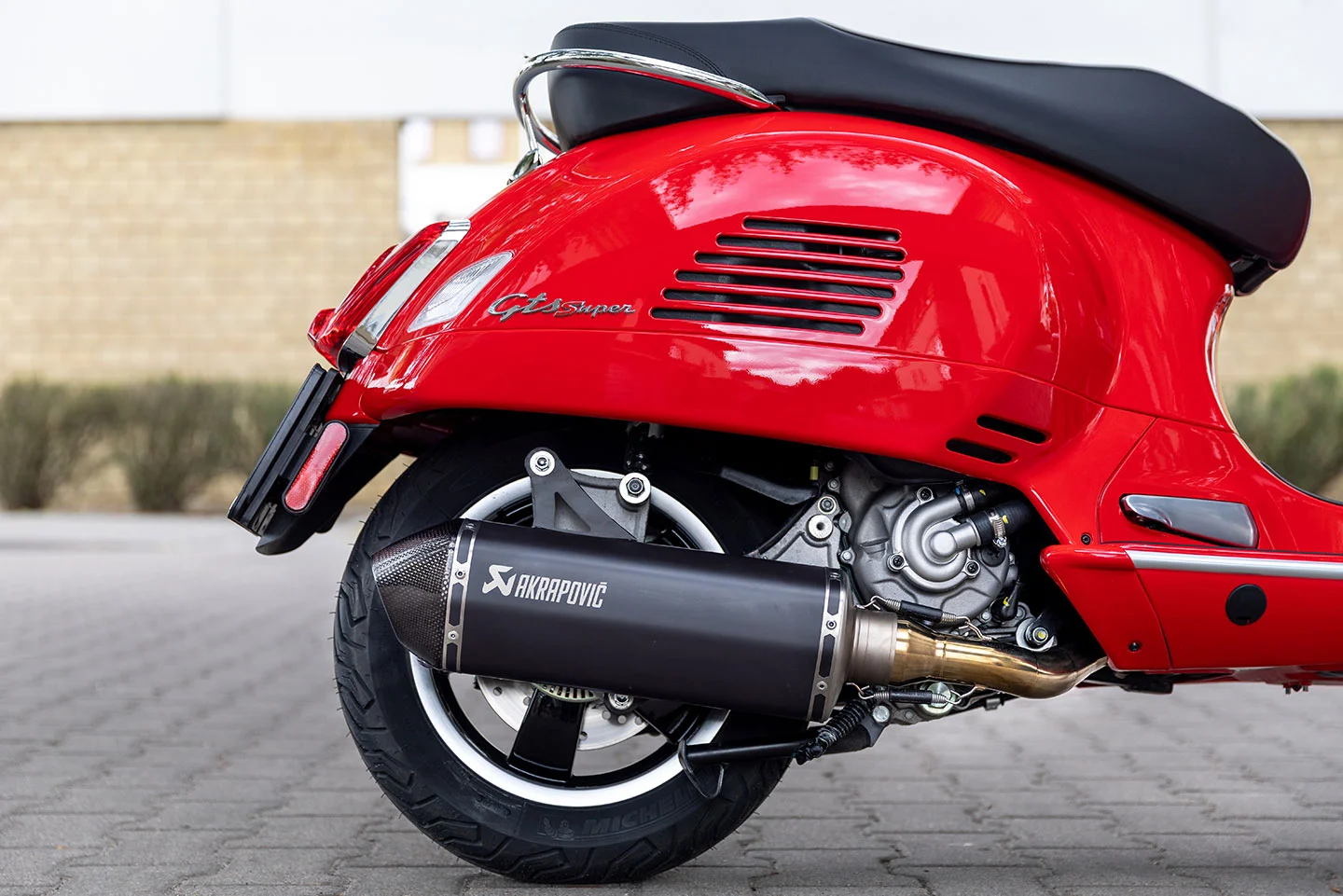Back in the late 1980s, Igor worked at his father’s factory, manufacturing plastic products through pressure casting. During his leisure time, he would fine-tune engines for his friends and participate in races.
It was during this period that Igor recognized a crucial missing element in the racers’ arsenal: high-quality exhaust systems capable of delivering noticeable performance gains. Thus, his passion gradually transformed into a business.
“In reality, I was just lucky to turn my passion into my job,” Igor admits. “I love the part of the work that involves engines and consider it the most enjoyable.”

Soon, Igor gathered a team that helped him focus on what he excelled at — dealing with engines and developing exhaust systems for them.
The company was formally established in 1990. Two years later, an electrician named Slavko Trstenjak joined Igor, bringing similar repair and tuning abilities to the table. The following year, a talented sales manager, Marko Adamic, joined the team.
“We started off as a small team – Igor, Slavko, and myself. We remained together at every step of the way as our business grew. We ensure that as we expand, the company’s atmosphere always remains positive. People are eager to work with us. Our salaries are up to 100% higher than the average wage in Slovenia. It’s part of Igor’s policy. He wants employees to enjoy working here genuinely. Most of them have a passion for racing. After each race weekend, we print out and display the results on the walls for our workers to know if the bikes with our exhausts have won,” shares Marko.
In the beginning, Igor used to split his time, dedicating half to engine tuning and the rest to developing exhausts. The initial reception of his products was so great that Akrapovic soon decided to focus exclusively on manufacturing exhaust systems.

The humble “workshop” was actually a regular house, and soon enough, its 450 square meters became insufficient. In 1997, production was relocated to the neighboring building, with an area of 7,000 square meters, and transformed into a fully-fledged modern factory.
Things started to pick up thanks to Igor’s innate knowledge of engines and the introduction of a range of cutting-edge technologies and materials at the time.
“I started as Igor’s assistant,” reminisces Slavko. “Igor practically did everything himself. He dismantled and reassembled engines, replaced valve seats, and much more. He even personally tested motorcycles. The only thing he didn’t do was welding.”
Igor and Slavko began utilizing new pipe diameters, transition tube configurations, conical collectors, as well as thin-sheet stainless steel, titanium, and carbon fiber.
The resourceful Igor proposed to Kawasaki Deutschland to test his revolutionary exhaust system. To the team’s astonishment, it surpassed the factory version significantly. This triumph laid the foundation for the company’s future great success. Starting with just a handful of German teams in the Pro-Superbike class, Akrapovic swiftly established dominance in superbike racing around the globe. By 1999, all major Japanese manufacturers relied on Akrapovic exhaust systems for their race motorcycles in the prestigious World Superbike championship!

“Our branding on the exhausts means that they are indeed made by us,” clarifies Igor. However, such a claim doesn’t hold true for all manufacturers. Just because a particular brand is displayed on the exhaust doesn’t always mean they are the actual manufacturers. Throughout the years, it has often been the case that a factory-made exhaust had the supplier’s name slapped on it, thanks to the generous payments to the team.
Let’s take a moment to recall the iconic Honda V5 ridden by Valentino Rossi. The bike sported an Akrapovic exhaust. So, why did it have a different logo featured on it? Well, it all comes down to money and sponsorship. Valentino Rossi and the Repsol team tied up a sponsorship deal with the exhaust system manufacturer Polini. As a result, instead of receiving well-deserved recognition, Akrapovic was paid by Honda Racing Corporation to act as a silent partner, supplying their creations without any visible credit.
One of Rossi’s original motorcycles, the RC211V, still resides at the Akrapovic factory. The funny thing is Polini specializes in exhausts for scooters only. Nevertheless, Akrapovic isn’t eager to expose Polini and prefers to be on good terms with Japanese manufacturers. Once, they attempted to replicate one of Akrapovic’s exhausts to see if they could achieve greater success, only to have their version produce two horsepower less than the original.
Speaking of comparisons with other companies in the industry, Yoshimura comes to mind. The legendary tuners and highly skilled craftsmen, Pops and his son Fujio, have created a range of top-notch exhaust systems that have demonstrated outstanding performance on par with Akrapovic.
During the first seven years, Akrapovic exhaust systems were marketed under the name Skorpion until they encountered legal issues related to the brand name (although with a different spelling) in the automotive exhaust system world. And is there a name that better encapsulates the brand’s essence than the surname of the creator, who gained fame through his mastery?

The company never regretted changing the name, even though some associate it with exhaust systems that are too expensive for the average person. “The widespread use of crossovers is essential for increasing performance, but it also raises the cost,” Slavko smiles, referring to the Akrapovic’s signature intricate conical tubes. “Top performance always comes at a slightly higher price.”
A lot of work has been put into integrating new exotic materials. Inconel is now being used, which is twice as expensive as titanium. When subjected to constant stress and heating, titanium can become as brittle as glass, whereas Inconel is much stronger — all while maintaining the same weight as titanium.
It’s precisely this daring and innovative approach to new ideas and materials that has shaped Akrapovic into what the company is today.
Slavko Trstenjak straightforwardly explains Igor Akrapovic’s success: “It’s because he’s got some serious guts and takes the important decisions himself. The purchase of the first pipe-bending machine was a daring adventure and required massive investments. Transitioning from the old small factory to a larger one was another significant commitment. He knows that everything depends on him.”
As for Akrapovic himself, he humbly shrugs when asked the same question: “We just know how engines work. We started out as tuners, working on engines and making exhausts perform to their fullest potential. We put in a great deal of effort, explored various ideas, and carried out no less than 200 dyno runs to achieve something truly functional. We also maintain an exceptionally high level of quality control and hire the finest specialists.”
Where is Akrapovic located
Let’s briefly run through history and geography for some general knowledge. Slovenia used to be a part of the former Yugoslavia. The capital of Slovenia is Ljubljana. The Akrapovic factory is conveniently situated just an hour’s drive away from the capital. Slovenia shares its borders with Italy to the west, Croatia and Hungary to the south and west, respectively, and Austria to the north. Despite the conflicts and challenges faced by its neighboring country Croatia, Slovenia managed to steer clear of most of them, although it did gain its independence through a 10-day war in 1991. With its stunning natural beauty and access to the Adriatic Sea, Slovenia is a marvelous destination to explore.
Interesting Facts about exhausts Akrapovic

The very first Akrapovic exhaust system was crafted in 1990. By 1994, they had already produced 2,500 units, and the following year, that number grew to 5,000. On average, the brand sells around 38,000 exhaust systems per year.
In 2004, the factory utilized 100 tons of titanium, with 90% of it sourced from Japan. Most of the stainless steel and aluminum they use are obtained from Italy.
The best-selling exhaust is the one for the Yamaha R1, although the exhaust systems for the Suzuki GSX-R1000 are quickly catching up.
The exhaust systems with the widest range of variations are the Kawasaki ZX-7RR or Honda SP-1/SP-2.
Would you like to install an Akrapovic exhaust system for your motorcycle?
Find a motorcycle master in your area with excellent reviews and verified by other motorcyclists in the best application for motorcycle riders and bikers CryptoMoto. Who knows, maybe Igor Akrapovich is there too 😉








